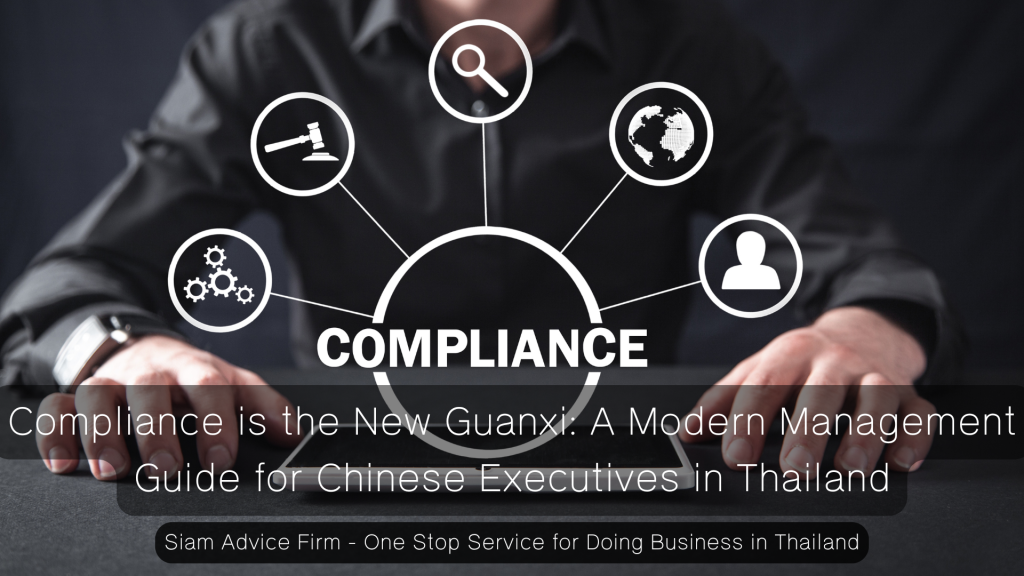
Imagine your Thai-Chinese team operating in perfect synergy—a dynamic force of positive energy, creativity, and shared commitment to a single goal. A high-performing, unified team is the most powerful engine to drive your business growth in Thailand.
Yet, for many Chinese executives, the reality on the ground presents a series of invisible challenges: a pervasive silence in meetings, simmering but unspoken conflicts, and a level of team performance that never quite meets expectations. The root of these issues is almost always a profound, yet often misunderstood, difference in work culture.
This is more than a simple guide to business etiquette; it is a cultural decoder. We will provide you with four essential keys to unlock your team’s potential, helping you to understand, motivate, and lead your Thai-Chinese team to excellence.
The Core Challenge: Directness vs. “Kreng Jai”
The fundamental friction point between Chinese and Thai work styles often comes down to one core difference in communication philosophy.
- The Chinese Perspective: Chinese work culture, honed in a highly competitive environment, prioritizes efficiency, speed, and directness. Communication is expected to be straightforward, problems are addressed head-on, and decisions are made quickly.
- The Thai Perspective: Thai professional culture is deeply influenced by the concept of “Kreng Jai” (เกรงใจ). This isn’t simple politeness; it’s a deep-seated desire to maintain group harmony, preserve relationships, and show respect, particularly to seniors. This can result in Thai employees avoiding direct disagreement or refraining from asking questions that might challenge their superiors.
- The Misunderstanding: This cultural gap often leads to negative interpretations. A Chinese manager might perceive their Thai team as “passive” or “lacking initiative.” Conversely, the Thai team might view the Chinese manager’s direct style as “aggressive” or “impatient,” creating an atmosphere of fear that stifles creativity and honest feedback.
Key #1: Communication – Speak Less, Listen More
To bridge the “Kreng Jai” gap, you must proactively create an environment where your Thai team feels safe and respected enough to share their true opinions.
- Create Psychological Safety: While group meetings are important for announcements, they are often not the best forum for genuine discussion. Schedule regular one-on-one meetings with your key team members. In this private setting, they are far more likely to share concerns, ideas, and feedback.
- Use Open-Ended Questions: Avoid asking, “Do you understand?” as the answer, driven by “Kreng Jai,” will almost always be “yes.” Instead, ask engaging, open-ended questions like, “What are your thoughts on how we can improve this process?” or “What challenges do you see with this approach?”
- Read Non-Verbal Cues: Pay close attention to body language. Hesitation, a forced smile, or a lack of eye contact can often communicate more than words. This is a crucial skill for understanding the true sentiment in the room.
Key #2: Giving Feedback – Praise in Public, Criticize in Private
How you deliver feedback can either build or destroy trust with your Thai team. The golden rule is simple but non-negotiable.
- Praise in Public: Recognizing an employee’s excellent work in front of their peers is one of the most powerful motivators in Thai culture. It shows respect and elevates their standing within the team.
- Criticize in Private: Never, under any circumstances, give negative feedback or correct an employee’s mistake in a group setting. This causes them to “lose face,” a concept of deep importance in Thailand, and can irreparably damage their morale and your relationship with them.
- Use the “Sandwich” Technique: When giving constructive criticism in private, frame it positively. Start with genuine praise for something they do well, then provide the specific, constructive feedback for improvement, and end with a statement of encouragement and confidence in their abilities.
Key #3: Motivation – Relationships Matter More Than Money
While competitive salaries are important, long-term loyalty and motivation in a Thai workplace are often built on the foundation of human relationships.
- Be a “Pee” (พี่) and a “Nong” (น้อง): The Thai workplace often functions like a family. As the leader, you are the “Pee” (older sibling or senior), and your team members are the “Nong” (younger sibling or junior). Acting as a caring and supportive mentor—by asking about their family, showing concern for their well-being, and offering guidance—builds a level of personal loyalty that money alone cannot buy.
- Encourage Team Activities: Fostering personal bonds outside of the office is invaluable. Supporting team lunches or dinners helps to break down hierarchical barriers and builds the genuine camaraderie that fuels effective teamwork.
Key #4: Compliance is the New “Guanxi”
This is the most critical strategic shift for modern Chinese executives in Thailand. The Insight: In the past, business success might have relied heavily on personal connections, or “Guanxi.” But in today’s increasingly regulated and professional business environment, the old ways carry significant risks. The most valuable and sustainable form of “connection” is now
trust, and that trust is built on a foundation of transparency and legality.
The Action: Investing in a robust and fair HR system, strictly adhering to Thai labor laws, paying social security correctly, and fostering an ethical corporate culture is the new “Guanxi”. This approach doesn’t just protect you from legal risk; it builds a powerful reputation that attracts and retains the best Thai talent. It sends a clear message to your employees and business partners that you are a serious, reliable, and respectable player in the market.
Conclusion: The Power of a Hybrid Team
Managing a cross-cultural team is not without its challenges, but it is far from impossible. The core principle is empathy—the willingness to understand the “why” behind your team’s actions and to adapt your management style to one that respects and honors cultural differences.
When you successfully merge the greatest strengths of both cultures—the ambition and drive of the Chinese work ethic with the harmony and collaborative spirit of the Thai team—you create a hybrid powerhouse. This integrated team will not only be more innovative and productive, but it will also be your single greatest competitive advantage.